We’re Baaack
It’s been 7 months and 27,000 miles since we left Maryland on December 26, 2016. This post was started in Alaska, continued in Canada and re-started in Alaska again and finalized in the Yakima, Washington area when we were able to locate and connect to wifi strong enough to upload the blog post plus photos. In other words, this long overdue post is slightly long in the tooth as well as overdue . . . so much so that we nearly scrapped it for an updated one. Despite the delay in posting and despite whatever new ideas are floating in our heads now that we have returned to the lower 48, we share this with you because, among other things, it accurately reflects our state of mind when we wrote it and a lot has happened since we last wrote.
At the end of May, when we last posted, we crossed into Canada from Montana. Since crossing the border, we traveled through Canadian National Parks in Alberta, across northwestern Canada and through parts of British Columbia and the Yukon Territories. We drove north past the Arctic Circle to Inuvik, in the Northwest Territories: Inuvik is the most northern Canadian city that can be reached during the summer (in the winter, one can drive farther north on ice roads, thankfully not present when we arrived on June 20). When we returned from Inuvik, we headed into Alaska after crossing the Yukon River by ferry at Dawson City, YT.
While north of the border to the lower 48, we traveled every major highway in Alaska, returned back into Canada, back again into southeastern Alaska and dead-ended at Skagway. From there, we took advantage of touring the Inside Passage on the Alaskan Maritime Highway (the public ferry system) to Juneau and then further south to Prince Rupert, British Columbia, with stops in Petersburg, Wrangell and Ketchikan. After our ferry trip, we will continue by road again through British Columbia into the Okanagan Valley to visit family and then end our time in Canada in the Vancouver area before we re-enter the lower 48.
During our summer north of the US-Canadian border, we visited Calgary, Banff, Yoho and Jasper National Parks in Canada and Denali and Klondike in Alaska, Lakes Louise, Morraine and Emerald, Grand Cache and Grand Prairie, Alberta; we entered the Alaska Highway in Dawson Creek, British Columbia and passed through Ft. St. John and Ft. Nelson, Watson Lake, Whitehorse, and Dawson City before entering Alaska near the town of Chicken. In addition to Chicken, we visited Alaskan towns and cities named Tok, Delta Junction, Fairbanks, Denali, Talkeetna, Palmer and Wasilla, Seward, Sterling, Cooper Landing, Kenai, Soldatna, Homer, Ninilchik, Anchorage, and Valdez. We traveled highways referred to by name rather than number: the Alaska, the Klondike, The Top of the World, the Parks, the Richardson, the Glenn, the Dempster.
We learned that satellite radio (and TV presumably) doesn’t work in areas near and north of the Arctic Circle (something about pointing the satellite into the ground), and that it is exhilarating (and sometimes exhausting) to have 18-24 hours of light. We also learned that unless you catch your own salmon or halibut, there is pretty much no chance of finding inexpensive fish to buy in Alaska. Based on recommendations made by Alaskans, we bought halibut and Copper River sockeye salmon at Costco, of all places. Both were expensive and unbelievably delicious as were the incredibly large, firm and briny Alaskan oysters and sweet, meaty king crab legs. We dined on elk, wild boar, bison and reindeer meat and prepared our own elk osso busso, and grilled fish and lamb, on Roque-designed stone-rimmed fire pits next to riverbeds where we wild camped.
During these travels, we have seen more beauty that we would have thought possible and enough to sustain us for years to come. We have spied dozens of bear – grizzly and black — elk, caribou, moose, eagles, ptarmigan, Dall sheep, big horned sheep, mountain goats, wolf, coyote, mule deer, salmon and sea lions. We’ve learned how to convert gasoline from liters to gallons and then from Canadian to US dollars. We have driven through vastly different eco systems, have seen the highest mountain in North America, and have gazed upon glacial lakes and rivers in rainbow hues from emerald to turquoise to aquamarine. We’ve awakened to bright sunlight at 2 am and taken to the road in the middle of the night on several occasions. We’ve driven a thousand miles on gravel roads through Arctic tundra and hundreds of miles on roads peppered with frost heaves and washouts due to avalanches and rock slides. We’ve seen mountains frosted with snow and glaciers in July and shrouded with clouds even at midday. It’s been a feat of endurance that was worth every kilometer driven and gallon of gas consumed.
As if this was not enough, we added new friends, Tom and Stacie, who we met in Banff, to our rich lives, and reconnected with full-time RVers, Gayle and Bobby, who we met back at Big Bend National Park in March. We joined up with Tom and Stacie in Dawson Creek, BC and traveled the Alaska Highway together until Whitehorse, Yukon Territories when we parted paths: our travels took us on the Klondike Highway north to Dawson City and Inuvik and they traveled west on the Alaska Highway toward Alaska. During our hundreds of miles together, we tried dry-camping (aka wild camping, dispersed camping, boondocking, free camping), our courage buoyed by our belief that we had safety-in-numbers. We shared meals from time to time and happy hour pretty much every day we traveled together. We rejoined them in Fairbanks, Denali and Anchorage and enjoyed their company, their senses of humor, and their joy of life and we all enjoyed our time together as well as the stories of our times apart. We know we will stay in touch and we hope to see them again someday– whether along this trip, in Panama or in Florida, where they will return, to greet their newest grandchild, in November.

Alaska also allowed us to meet up again with Gayle and Bobby who we met by chance while in Big Bend National Park. There, Gayle gave us a great book about camping in Alaska that became our camping “bible” for much of Canada and Alaska. We discovered that we expected to be in Denali at the same time and pledged to meet up again. Our meals with them in Fairbanks were filled with laughter and animated conversation and, we hope, not our last times meeting up with them.
We met other people as well at nearly every campground or stop and shared travel stories and recommendations. We spoke to retail clerks, museum docents, fellow campers and others about how they grew up or ended up in Inuvik/Pelly Crossing/Denali/Soldatna/Dawson City. We tried to learn more about the folks who opt to live in these sparsely populated, distant, bitter-cold-in-winter, sometimes isolated, winter-dark places and heard that they are drawn to these areas because of the peace, the beauty, the clearness of the water and air and the amazing summers which long, long days of clear, warm temperatures and endless outdoors opportunities offset the dark and cold days of winter.
The Power of Resiliency
Looking back at the past couple of months, it feels like a thousand years has passed since we wrote our last BootsandCoffee.com post at the end of May. That post, as many before it, described some of our earlier struggles as we took to the road: living in a teeny space, living without certain creature comforts, the challenges of finding cell, wifi and TV signals, locating foods to which we had become accustomed, not having the ability to make sustained connections with other people and more. There were always beautiful things that helped balance the unsettled parts of us but the first several months of this trip definitely presented us with many logistical and emotional challenges.
Then, the light switched on and our journey changed from a moment-by-moment experience to a place of soul-deep contentment. Perhaps reflection over time will disclose why this transformation happened but for now, we have only working theories. For now, it seems that it is simply because we have settled into our new life and it has become, like broken-in hiking boots, comfortable.
Not all travel is for “vacation” – ask people who travel as part of their work – and not all travel, even for vacation is enjoyable. For many, the actual travel is the least enjoyable part of going on vacation and no matter how wonderful vacation can be, nearly everyone returns home following vacation with a sigh of relief when sinking into one’s own bed or favorite chair. It took us quite a while to adjust to the concept that this trip was not really a vacation and perhaps even longer to adjust to the concept that there would not be a return to our beloved waterbed or favorite chairs.
That said, on this trip, the journey has been more important than the destination. The sights and experiences have been spectacular but more than those are the slowly evolving internal shifts. We have traded flickering campfires for flickering TV screens and have adjusted to our phones as paperweights in many areas. We remain interested in current events but are no longer glued to the news to start and end our days. We have developed connections with people that are focused more on core values than politics and issues. We have found solace in the quiet, joy in each others’ company, amazement in the things we are learning, and appreciation for small things like the freshness of the air, clarity of the water, or a hot shower that does not required conserving water.
We still love reaching a town large enough to host a decent grocery store or finding that we have a cell signal. We still prefer smooth pavement to washboard roads. And while the lack of humidity for the last several months has been heavenly, we look forward to weather warm enough to allow us to wear shorts and sandals again.
We met a woman known as Klondike Sarah at the Yukon Territories Congdon Creek Campground. Sarah, who we estimate to be in her early 40’s, is from Great Britain, and now lives in Dawson City and works for the Yukon Territories Park system. While watching contractors complete an electric fence enclosure for tent campers (to protect them from bears), we learned that she lives in a 260 square foot cabin with no indoor plumbing and an extension cord for her electricity. Before she arrived in the Yukon, she did not consider herself particularly outdoorsy and yet she has chosen this way of life. When asked why, she replied “How many people can work 4 months a year and take 8 off?”
Sarah was not the only person we met who chooses to live with an outhouse and no indoor plumbing. The wife in a couple of Yukoners that we met at the Lliard Hot Springs told me she much prefers her outhouse to her inside bathroom because she doesn’t have to clean it. A Goddard Space Center retiree from Deale, Maryland, and her NASA rocket scientist (ret.) husband, who helped us in a shop outside Denali National Park, also chooses to live in a cabin with “his and her outhouses” and an outdoor shower only. In Alaska, we heard references to “subsistence lifestyle” which we came to learn meant those who eat only on what they trap, hunt or catch; others live differently but still fish and freeze hundreds of pounds of salmon each year to keep them going through the winter.
These lifestyles are not ones that we would choose to live but the longer we are on the road, the more we can relate to living with less. One of Roque’s friends recently asked him how he deals with the quiet time. He answered that the quiet is exhilarating and calming and soothing to the soul. This, too, has been an evolution, not unlike the period of transition that occurs when one moves from one house to the next, even in the same city, and has to learn the new routes, new shortcuts, new places to buy food and to repair shoes. I have long believed that it takes quite a bit of time for a place to start to really feel like home. Why would we think differently about life on the road?
I believe that part of what unsettled me at the beginning of this journey was the unknown in front of us. I had so many questions: where would we stay? Could we afford it? Would there be a campground vacancy and if not, what next? What would we do if we didn’t have Google Maps to help navigate or internet for email, social media and news? Would there be a grocery store where we could purchase food while in between national parks/towns/cities? How would we refill prescriptions/cut hair/fill gas tanks along our travels? Would we make it to various places “on time?” How would we be treated along our travels?
With 7 months, 27,000+ miles, 2 countries, 4 time zones and hundreds of new experiences under our belts, we have developed the confidence, the courage and more of an easy-going nature that has grown from experiencing a lot of things that might otherwise have taken the wind from our sails. We’ve had flat tires and broken windows; we’ve had to carry extra gas just to make it to the next fuel stop. We’ve visited towns without grocery stores (and not starved) and stopped for the night where we were the only people in sight. Learning that you can trust yourself, your gear, skills and knowledge is powerful. And it fortifies us for the months ahead.
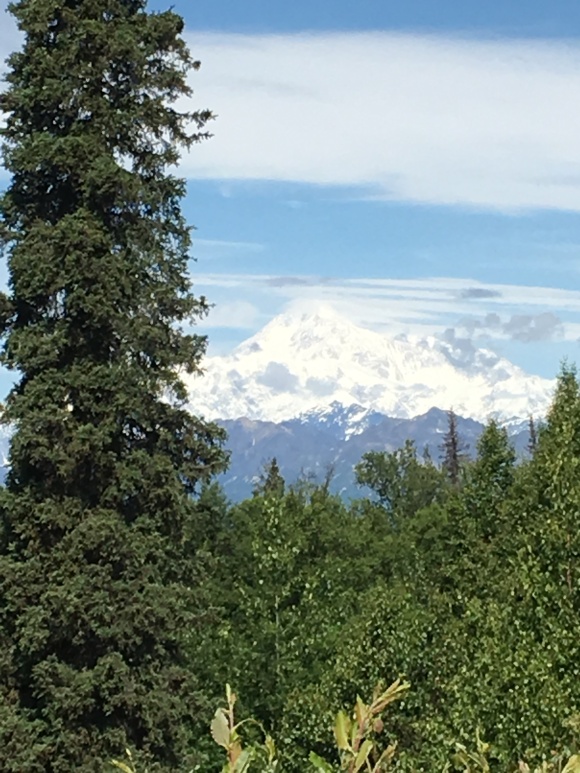

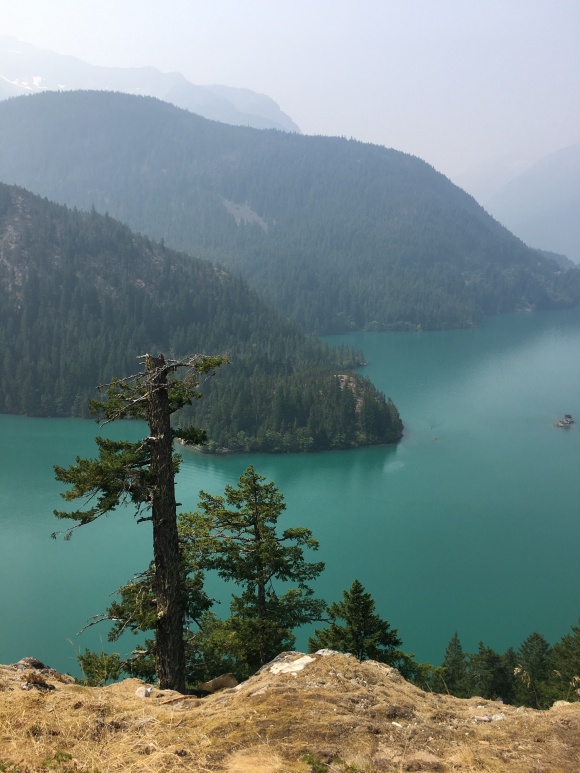


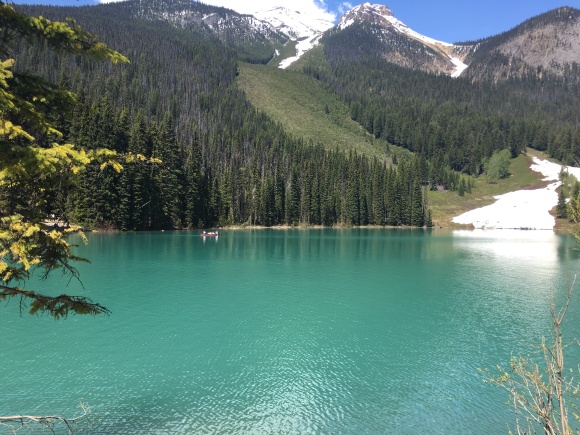


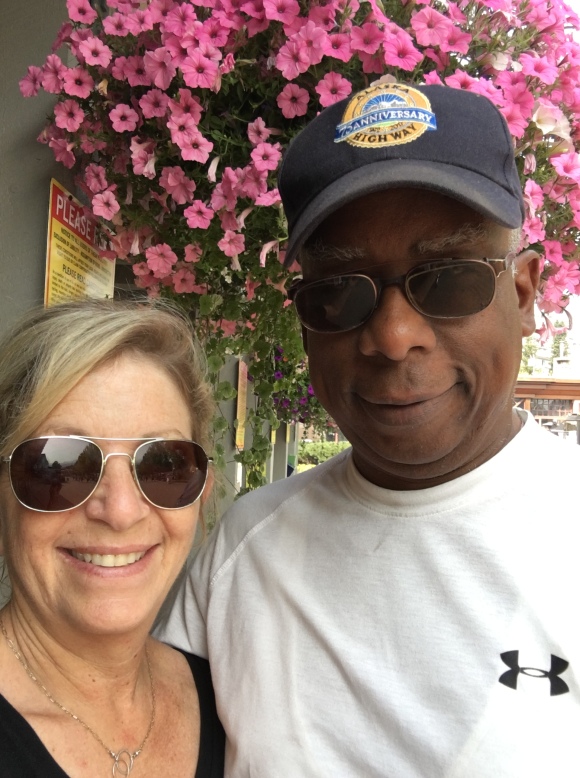


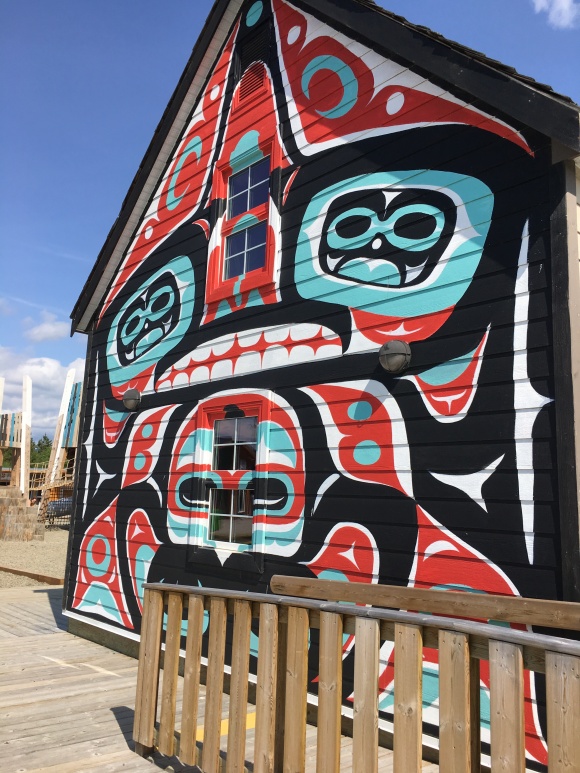









It is wonderful to hear from you. I often think about you and where you might be, and your post came at a great time.
The happiest news I heard here is that you are comfortable and embracing your travel and the new lifestyle it brings. Bravo for you.
Thanks too for the pictures, descriptions of transforming scenery and events, and for journaling your successes. It comforts me but doesn’t surprise me.
We are well. We sold the house, moved its contents to either consignment, the Sarasota condo, the NJ co-op, or Goodwill. George and his son Tim drove a Penske up to NJ just in time to celebrate Tim’s 32nd birthday on July21. And we remain here in Red Bank thru October.
I’ll write you an email to catch you up on the rest.
Sending hugs from us both to you both.
Love, Jet
LikeLike
I am so glad I “clicked through” to read this, Roque. What a beautiful thing to share this journey. As I read it, I felt awed, humbled, reflective, and inspired. Thank you and best wishes to both of you!
LikeLike
Absolutely loved following your adventures.
Thank you for sharing.
LikeLike
Thanks for an informative and interesting post.
Indeed it is the journey not the destination.. My ‘journey’ on life’s road brought me to Alaska from 48 years in a major east coast city only to find…. a place I truly felt at home Alaska. Living with less is in Alaska living with more. Giving up the big city I choose to live 65 miles north of Fairbanks in an isolated cabin in the wilderness. For 14 years I lived off-grid every day experiencing the sights, sounds and nature you found on your travels. My health made it impossible to handle the rigors of this lifestyle and I left in 2016, but my soul will remain forever in a land touched by the hand of God.
LikeLike
I have no idea how I found this writing, but I love it. My husband and I just finished a 2 week 5 national park trip South Dakota to Nevada drive. Although not as long, I do understand the value in the peace, the quiet. So happy there are places that allow this solitude. Thanks.
LikeLike
Thanks, Ruth!
LikeLike
I love the pics on your blog and in your posts! I would greatly appreciate a follow as I build my own travel site! I’m a Newbie @ https://travelwithtiffanie.wordpress.com
LikeLike
LOvely post. Tahnk You.
Well, have You seen:
Arctic Circle in winter.
It is wonderful!
Happy and safe travels.
LikeLike
I really love this post! I experienced many of the same things you did when we made our Alaska journey in 2013. We are not full timers and return to our sleep number bed and tile shower after each RV trip but whenever we are on the road our fifth wheel is home.
LikeLike